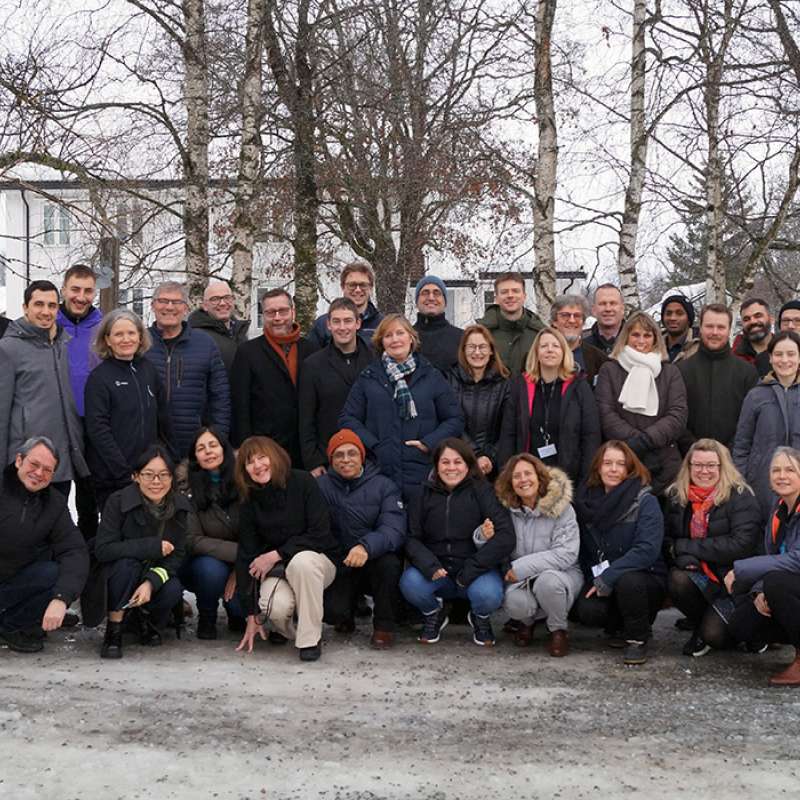Andrea Ficke
Senior Research Scientist
Attachments
CV Andrea FickeBiography
Abstract
No abstract has been registered
Abstract
No abstract has been registered
Abstract
No abstract has been registered
Abstract
No abstract has been registered
Authors
F Durand-Maniclas H Heinemann F Seidel F Ciulla Teresa Gómez de la Bárcena M Camenzind S Corrado Z Csűrös Zs Czakó D Eylenbosch Andrea Ficke C Flamm J M Herrera V Horáková A Hund F Lüddeke F Platz B Poós Daniel Rasse M da Silva-Lopes M Toleikienė A Veršulienė M Visse-Mansiaux K Yu A Don J HirteAbstract
Abstract Background and aims Understanding the relationship of root traits and crop performance under varying environmental conditions facilitates the exploitation of root characteristics in breeding and variety testing to maintain crop yields under climate change. Therefore, we (1) evaluated differences in root length and surface area between ten winter wheat varieties grown at 11 sites in Europe covering a large pedoclimatic gradient, (2) quantified differences in root response to soil, climate and management conditions between varieties, and (3) evaluated variety-specific relationships of grain yield and root length and surface area under diverse environmental conditions. Methods At each site, we sampled the roots to 1 m soil depth after harvest and determined various root traits by scanning and image analysis. The impacts of soil, climate and management on roots and yield of the ten varieties were analysed by means of multivariate mixed models. Key results Root length averaged 1.4 m root piece−1, 5007 m root m−2 soil, and 5300 m root m−2 soil and root surface area 0.039 m2 root piece−1, 40 m2 root m−2 soil, and 43 m2 root m−2 soil in 0.00–0.15 m, 0.15–0.50 m, 0.50–1.00 m soil depth, respectively. The variation in both traits was 10 times higher between sites than varieties, the latter ranging by a factor of 2 within sites. Irrespective of variety, temperature was a major driver of subsoil root traits, suggesting that warmer climates promoted root growth in deeper soil layers. Other soil and climate variables affected root length and/or root surface area of individual varieties, highlighting different degrees of root plasticity. The varieties displayed distinctly different relationships between yield and root traits under varying pedoclimatic conditions, highlighting genetic differences in yield response to environmentally driven root plasticity. Conclusions These findings suggest that breeding efforts should target flexible root–yield relationships in the subsoil to maintain crop performance under climate change.
Authors
H. Heinemann F. Durand-Maniclas F. Seidel F. Ciulla Teresa Gómez de la Bárcena M. Camenzind S. Corrado Z. Csűrös Zs. Czakó D. Eylenbosch Andrea Ficke C. Flamm J.M. Herrera V. Horáková A. Hund F. Lüddeke F. Platz B. Poós Daniel Rasse Silva-Lopes da Silva-Lopes M. Toleikiene A. Veršulienė M. Visse-Mansiaux K. Yu J. Hirte A. DonAbstract
No abstract has been registered

Division of Biotechnology and Plant Health
Plant Pest prevention through technology-guided monitoring and site-specific control
One of the ambitious goals of the Farm2Fork strategy is to reduce the use of pesticides in the EU by 50%. The expected increase in plant pests due to climate change, international trade and the intensification of food production systems offsets this target.

Division of Biotechnology and Plant Health
Plant Pest Prevention through technology-guided monitoring and site-specific control (PurPest)
The main objective of PurPest is to control serious plant pests during import and to manage them in the field by developing a unique concept enabling pest detection in a timely and non-invasive manner.
